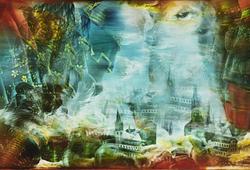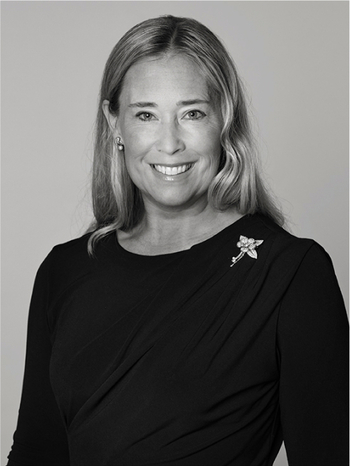A rare large ruby ground 'yangcai' floral bowl, Qing dynasty, 18th century.
The bowl is well potted with rounded sides rising from a straight foot painted to the exterior with enamels depicting a continuous lotus pond, featuring large blooms in yellow, pink, blue and greenish white, all supported on slender studded stalks, all reserved against a dazzling ruby-red ground. The interior and base are left plain. Diameter 18.8 cm. Height 7.5 cm.
Restored with staples.
Alkuperä - Provenienssi
Gustaf Oscar Wallenberg (1865-1937), Stockholm, and thence by descent within the family.
Gustaf O. Wallenberg was a Swedish businessman, diplomat and active politician. He was the son of André Oscar Wallenberg, founder of Stockholm Enskilda Bank (today's Skandinaviska Enskilda Banken, known as SEB). After a career in the Swedish Navy he turned to the business world and was active in improving the transoceanic shipping industry.
Wallenberg was Sweden's Envoy to Tokyo between 1907-1918. In April 1907 he travelled to Beijing to amend the Treaty of Canton (1847) between Sweden-Norway and China and to establish diplomatic relations between Sweden and the Qing Court. As the Swedish Envoy Extraordinary and Minister Plenipotentiary at the Court of Peking, he successfully negotiated and signed with Lien Fang, the Guangxu Emperor's High Commissioner Plenipotentiary and Senior Vice-President of the Wai Wu Pu, the Treaty of Amity, Commerce and Navigation, between Sweden and China, which was signed in Beijing on 2 July 1908, with an additional article signed on 24 May 1909.
The collection was acquired between 1907 and 1918 when Wallenberg was the Swedish Envoy in Tokyo, and possibly during his diplomatic service in China. Documents preserved at the Östasiatiska Museum in Stockholm demonstrate the importance of Gustaf Wallenberg and his extensive connections with the Qing government to the Swedish engineers and businessmen who were in China during this period, such as Johan Gunnar Andersson, Osvald Siren, Orvar Karlbeck, Erik Nordstrom and many more.
Gustaf Wallenberg was the grandfather of Raoul Gustaf Wallenberg (1912-1945), an architect, businessman, and diplomat. Raoul Wallenberg has been designated by Yad Vashem as one of the Righteous Among Nations, as well as having many monuments and streets named after him in honour of him saving thousands of Jews in German-occupied Hungary during the Second World War, while serving as Sweden's Special Envoy in Budapest. As he lost his father the same year he was born, he was brought up also by his grandfather Gustaf Wallenberg, with the Chinese porcelain collection around him, inheriting part of the collection when his grandfather passed away in 1937. He died at a time unknown between 1945 and 1947, further to his detention in Budapest by General Malinovsky in 1944, and arrest by the Soviet authorities. Further to his disappearance his part of the Chinese collection was deposited at the Östasiatiska Museum in Stockholm, and later released to the family.
Näyttelyt
Compare, Sothebys, lot 104, Chinese Art
Live Auction: 18 March 2025, New York. Property from Carnegie Museum of Art.
Compare also a small cup of this decoration sold at Bonhams, Fine Chinese Art. Hong Kong, 25 May 2011. Lot no 373.
Kirjallisuus
See two bowls of a smaller size but with the same design from the Qing Court collection, preserved in the National Palace Museum, Taipei, (Object Number故瓷017557N000000000 and Object Number中瓷001264N000000000 on web site) is illustrated in Harmony and Integrity: The Yongzheng Emperor and His Times, Taipei, 2009, pg. 215, pl. II-41 (fig.1), and discussed by Yu Peijin, who expounds that the ruby-ground enamel on the bowl is exactly that recorded as 'xiyang hongse' (literally 'Western red') on the Taocheng jishi pei, the calligraphy written on the death of Tang Yin, the Imperial supervisor of porcelain at Jingdezhen from 1728-1756.
See also a bowl in the British Museum, London, illustrated in Hugh Moss, By Imperial Command, Hong Kong, 1976, pl.5; and a bowl in the Victoria and Albert Museum, London, illustrated by Rose Kerr Chinese Ceramics: Porcelain of the Qing Dynasty, London, 1986, pl.93.
For a similar bowl bearing a Yongzheng yuzhi bowl sold at auction, see a slightly smaller example from the T.Y. Chao collection, sold at Sotheby's Hong Kong, 18 November 1986, lot 130.
But it is clear when comparing that his one is of unusually large size.










































